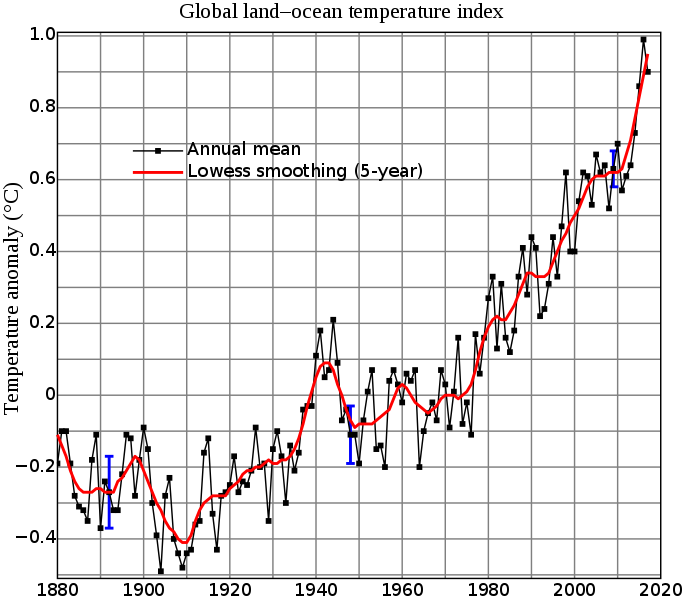It shouldn’t come as a shock, but lately, the bulk of the discourse on climate centers around temperature rise – not temperature decline. And, it’s for reasons that are not too difficult to imagine.
For the past century-and-a-half, what’s known as the Global Mean Surface Temperature, or GMST, has been tracking mostly positively, which means the GMST has been increasing overall. Many of us have both bore witness to and felt it also, those two respective constructs being intangible and tangible in nature and present simultaneously.
But, increasing overall implies also that there have been times within where GMST has both stabilized and declined. The reversal in temperature is the part that demands our attention not only because of the fact that there physically exists a temperature reversal, but that the reversal happened at all, well, this must be attributed to phenomena of one sort or another.
So, before I get into the more nuanced part of the discussion, at this time I would like to bring to the fore mention of a 2022 episode of Public Broadcasting Service’s NOVA program titled: “Ice Age Footprints,” which, incidentally, was rebroadcast on the local PBS affiliate on Wed., Jun. 28, 2023 at 9 p.m. Pacific Daylight Time and again on Fri. Jun. 30, 2023 at 2 p.m. PDT.
The presentation detailed human and animal life in North America and how long humans in North America have been around.
What I understood to be true based on what I had viewed in “Ice Age Footprints” was that the then indigenous peoples in and around what is today’s White Sands National Monument in the state of New Mexico some 21,000 to 23,000 years ago (during the last glacial maximum if I am to correctly recall what I had seen and heard) hunted mammoth and giant sloth. The evidence to support this hypothesis based on what I took away from my watching of this NOVA episode, was incontrovertible.
But, it wasn’t this fact necessarily that resonated with me most. Most impressed upon me was the ice age part, the tools the indigenous peoples used to not only bring down such imposing beasts, but as well, those used to enable the transport of their kills. This was all very interesting information. But, what, for me, had really hit home was this notion that at a time not that far back in the geologic time record ice covered much of the North American landscape, that, at times, was thick – we’re talking miles thick in some locations. All of which means prior to the onset of such ice-ball event, there was a temperature reversal present. That’s the message I’m trying to get across.
Okay, so that brings us to the place we are today.
As can be determined by looking at the accompanying graphical depiction (red line), there are 10 individual references where temperature was downward-trending: The periods between 1880 and 1885 and between 1890 and 1892; the durations from 1898 to 1909 and from 1915 to 1918; the times between 1929 and 1931 and between 1942 and 1948; the periods between 1960 and 1965 and between 1973 and 1974; and the spans of time from 1982 to 1984 and from 1989 to 1993.

The temperature changes or variations and reversals could be either naturally- or human-induced forcings-attributed (such as happens as a result off La Niña and El Niño events, variations in the Earth’s orbit around the sun, volcanic eruptions and the presence of greenhouse gases like nitrous oxide or aerosols like sulfur dioxide in the atmosphere), according to information on Wikipedia. (See: “Climate Change”).
Okay, so in referring again to the graph, there are three fairly sizable negative temperature swings (red line): between 1880 and 1885; between 1898 and 1909; and from 1942 to 1948. Meanwhile, the only observable general leveling off of temperature on the graph occurs between about the years 1950 and 1977 and readily noticeable and relatively lengthy rises happen between 1910 and 1942 and again from around 1965 to present day. It’s the last and latest stretch of increase that has climate watchers most concerned.
Above and corresponding, connected home-page-featured images: The NASA’s Goddard Institute for Space Studies
– Alan Kandel
Copyrighted material.
Last updated on Jul. 1, 2023 at 12:11 p.m. Pacific Daylight Time.